#tatoi palace
Text

Jackie Kennedy poses for cameras at the Tatoi Palace in Greece during her trip on October of 1963. With her are Queen Fredericia, Princess Irene, and Lee Radziwill.
#jackie kennedy#vintage#icons#lee radziwill#the kennedys#jackie o#1960s#60s#60s icons#vintage gif#60s vintage#60s glamour#60s girl#60s hair#60s women#1960s icons#1960s women#1960s fashion#vintage women#vintage beauty#vintage celebrities#greece#greek royal family#first lady#fashion icon#style icon#american vintage#beautiful women#interesting people#high society
63 notes
·
View notes
Note
Which do you think are the best castles in Greece?
Definitely the Palace of the Grand Master of the Knights of Rhodes.
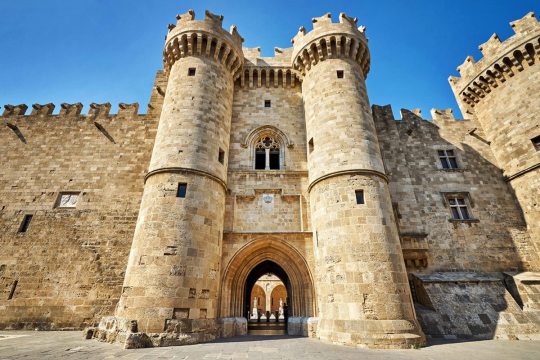
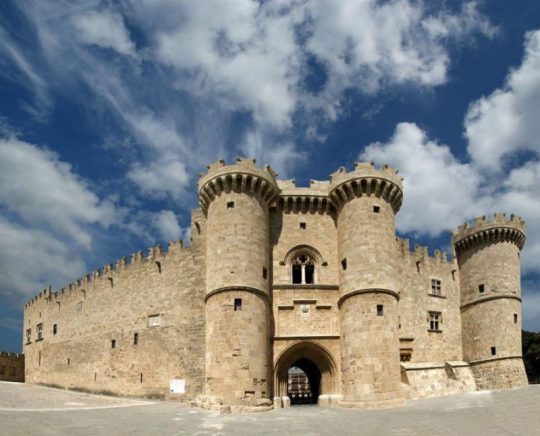

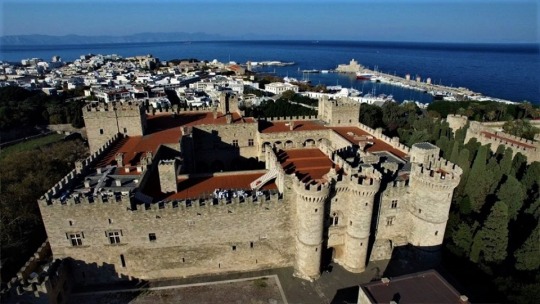

Fun fact: The makers of Game of Thrones originally considered the medieval town of Rhodes as a setting for King’s Landing. I am not sure,but I think the Greek state committees about film setting permissions were taking so long to decide that the makers were like “ok sod this” and went to Dubrovnik of Croatia instead.
I think other very good ones may be the ones in Monemvasia, Mystras, Methoni, Nafplio, Kos and Patmos but I haven’t been to any of these yet. Kerkyra (Corfu) also has beautiful fortresses but I don’t know if you include them in your definition of castles. So I don’t know if I also should mention Thessaloniki, for example.
I really like the Byzantine castle of Platamon. I believe it must have been really beautiful in its heyday and of course it’s built in a fantastic area.
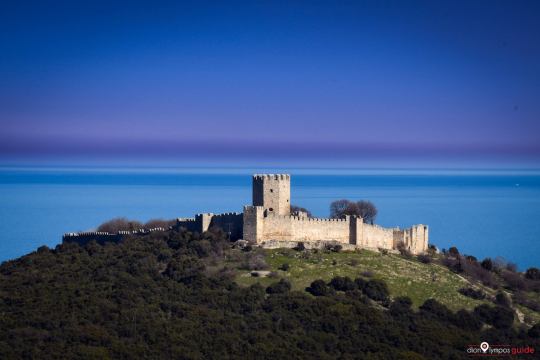

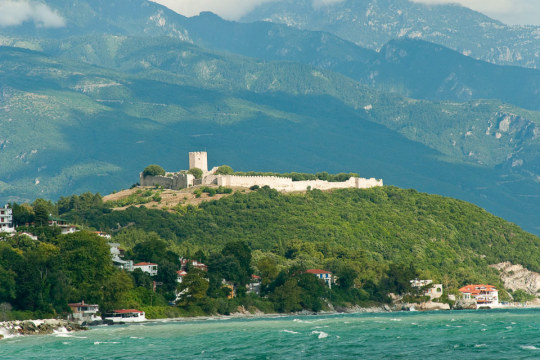

Then Corfu has the best palaces (Old Palace, Achilleion Palace, Mon Repos) but I put them in the category of palaces, not castles. Same with Athens. I don’t include Tatoi or the Old Parliament because they are palaces.
#greece#europe#castles#medieval#middle ages#byzantine culture#crusaders#Rhodes#Dodecanese#pieria#platamon#Macedonia#mainland#greek culture#greek islands#greek facts#anon#ask
171 notes
·
View notes
Text


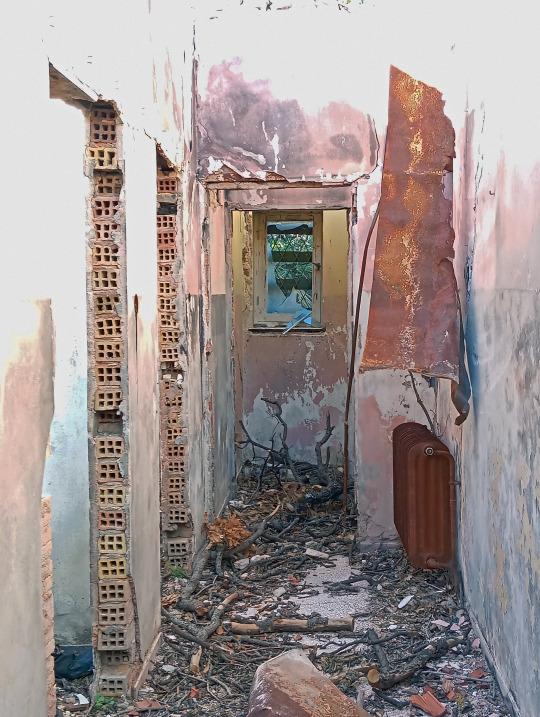
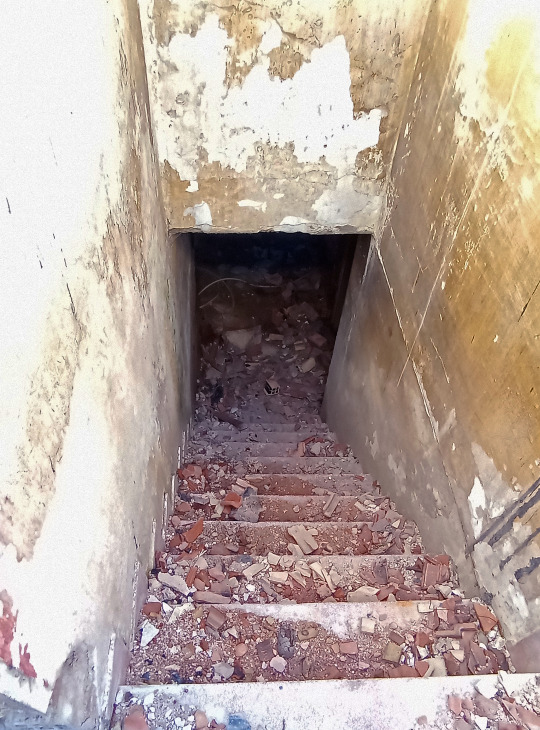



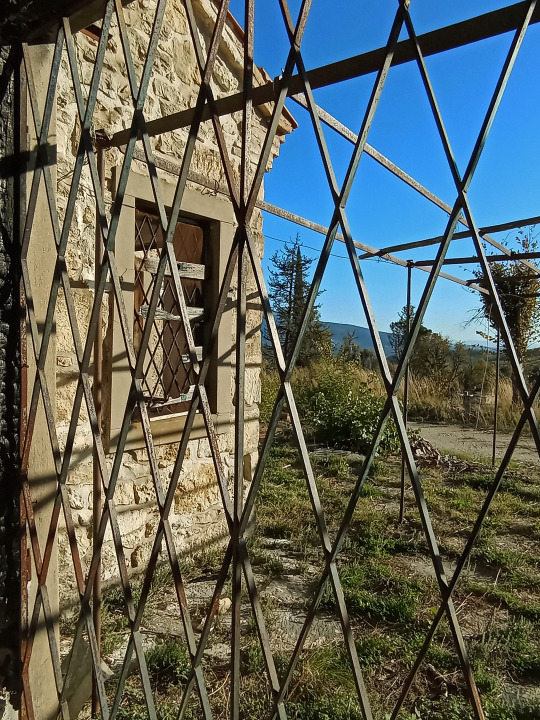


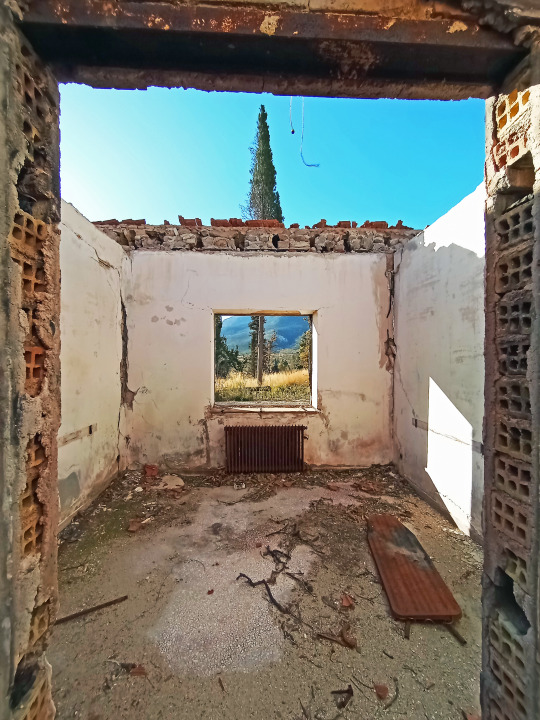

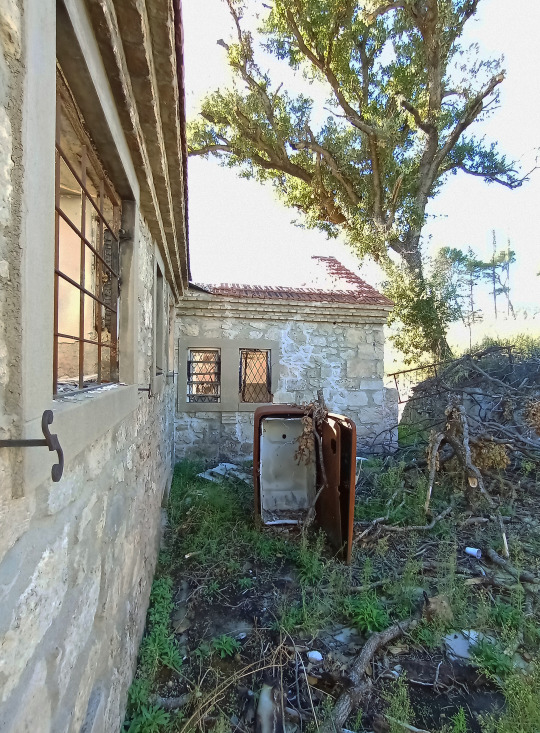
Here's when we did some involuntary urbex 😁 It was a very sunny and warm day, so we visited several places around Mount Parnitha and ended in Tatoi (those pics will be next), which is a property of around 20 kms² where the countryside palace of the Kings of Greece used to be. Greece has been a republic for a bunch of decades already, so yep, everything was in ruins and decay.
Of course, there wasn't only the palace, it had a ton of extra buildings for all the servants, and we found this one in the middle of nowhere. So, we had to explore it! We didn't touch anything, didn't get into dangerous rooms, like the basement. It was very interesting to see the remaining objects and rooms.
9 notes
·
View notes
Text
King Constantine II will be buried at Tatoi Palace as a private citizen, it has been revealed.
This was decided in an inter-ministerial meeting led by the Prime Minister, Kyriakos Mitsotakis, held on Wednesday morning at the Maximos Palace.
42 notes
·
View notes
Text



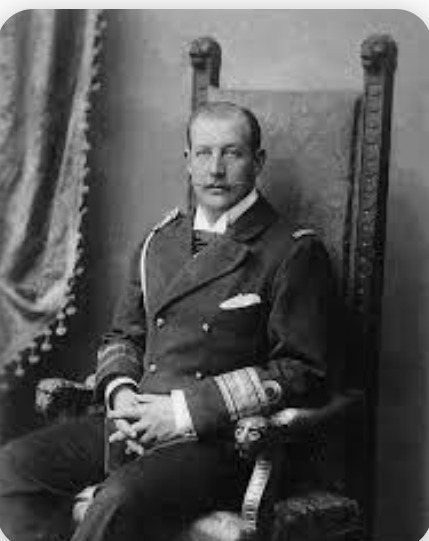

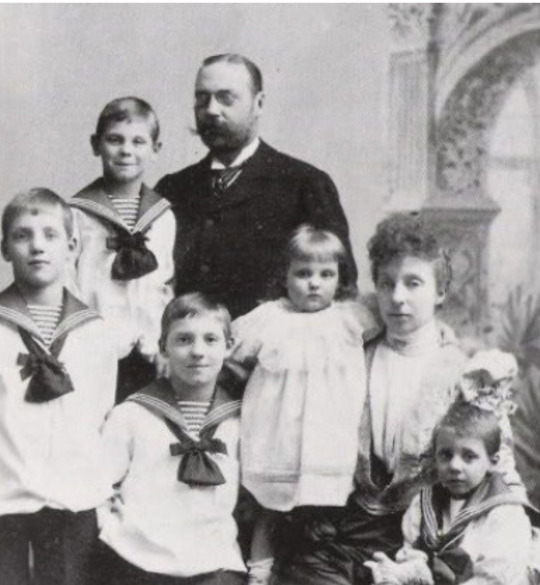


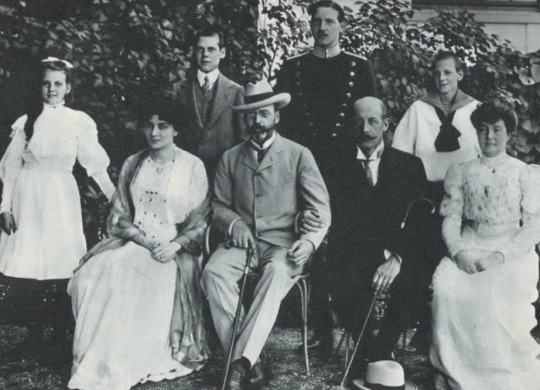

Photos: 1. Prince Waldemar of Greece; 2. Marie de Orleans, wife of Prince Waldemar; 3. Marie Bonaparte, wife of Prince George of Greece and Denmark; 4. Prince George of Greece and Denmark; 5. Prince and Princess George of Greece and Denmark and their children Prince Peter of Greece and Denmark and Princess Eugenie of Greece and Denmark; 6. Prince and Princess Waldemar of Greece with their children: Prince Aage Count of Rosenborg, Prince Axel of Denmark, Prince Erik Count of Rosenborg, Prince Vigo Count of Rosenborg, Princess Margrethe of Denmark. 7 and 8: Prince Waldemar of Greece and Prince George of Greece and Denmark; 9: Sitting: Marie Bonaparte, Prince Waldemar, Prince George, and Marie de Orleans surrounded by some of their children; 10. Prince Waldemar and Prince George
Sometimes, the love story is where you least imagine it...
Prince Waldemar of Denmark (1858 -1939) and Prince George of Greece and Denmark (1869 - 1957)
Prince Waldemar of Denmark was the youngest son of King Christian IX and Queen Louise of Hesse-Kessel. Waldemar entered the naval college as a young man in 1879. He was passionate about the navy and had a lifelong naval career; he was Vice Admiral and Admiral of the Danish Fleet. He married Princess Marie of Orleans, a granddaughter of King Louis Phillipe of France; they had four sons and one daughter and remained married until Marie's untimely death. Marie was a very intelligent and unconventional woman, and her life needs to be told at greater length.
Prince George of Greece and Denmark was the second child of George I of Greece and his wife, Grand Duchess Olga Konstantinovna (the Queen of the Hellenes); Prince Waldemar was George I's youngest brother. Therefore, Waldemar was George of Greece and Denmark's uncle. When George I and his wife decided to enroll their son in the Naval college, they took George to live with Waldemar, an admiral in the Danish fleet. George developed a great attachment for his uncle, which continued until Waldemar's death. (Prince George of Greece and Denmark was the cousin who went on Tsarevich Nicholas' European tour and ran to his rescue when Nicholas was attacked in the streets of Japan.)
George of Greece and Denmark married Marie Bonaparte, a very unconventional, wealthy woman who at one point was a disciple of Sigmund Freud and who became a psychotherapist. They had two children and remained married until George's death. She is another woman who deserves a book to herself.
When George married, Waldemar came along on his honeymoon. George would often return to his uncle’s palace for visits. At the end of these visits, George would weep while Waldemar would grow ill, both dreading the pending separation from each other. To their own credit, both French Maries respected the oddly close relationship between uncle and nephew.
Waldemar and George flawlessly fulfilled their military and dynastic duties to their countries. Their wives learned to cope with the unusual situation. They were always well-loved by their extensive families and included in all activities of their many European royal relatives.
George of Greece died at eighty-eight, surviving Waldemar by 18 years. When Waldemar died he had been devastated and found great comfort in his wife; the couple's last years together were their best. George was buried at the Greek Royal burial grounds at Tatoi. He requested to be buried with his wedding ring, a lock of hair from Valdemar, a photo of Valdemar, and earth from Valdemar’s palace. His widow honored this request.(gcl)
Were Valdemar and George more than just nephew and uncle? Perhaps. Were they involved in a strong and loving relationship? Undoubtedly.
Sources:
Lea. (2021, October 29). An odd royal relationship. Medium. https://worldroyals.medium.com/an-odd-royal-relationship-6a405ca16320#:~:text=George%20felt%20abandoned%20by%20his,in%20love%20with%20his%20uncle.&text=When%20George%20reached%20adulthood%2C%20he,%2C%20Catholic%20princess%2C%20Marie%20Bonaparte.
#European history#Danish history#Greek history#Prince Valdemar of Denmark#Prince George of Greece and Denmark#Marie Bonaparte#Marie of Orleans
17 notes
·
View notes
Text

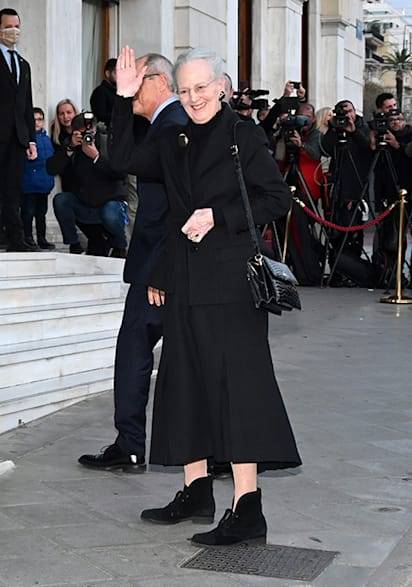




European Royals have begun to arrive in Greece for the funeral of King Constantine II. The event is due to be held on Monday 16 January at the Metropolitan Cathedral in Athens and will be followed by the Burial in the Royal Cemetery at Tatoi Palace.
Source: hello.com
37 notes
·
View notes
Text
King Constantine will be buried (alongside his parents in Tatoi Palace) as a private citizen, not state funeral or anything, but the Greek Government said that they will provide measures to guarantee the security of the royals attending. The Danish and Spanish are expected (Juan Carlos confirmed attendance but there is no date to the funeral). I'm pretty sure that te norwegians and dutch will attend too (and non- reigning houses).
22 notes
·
View notes
Text


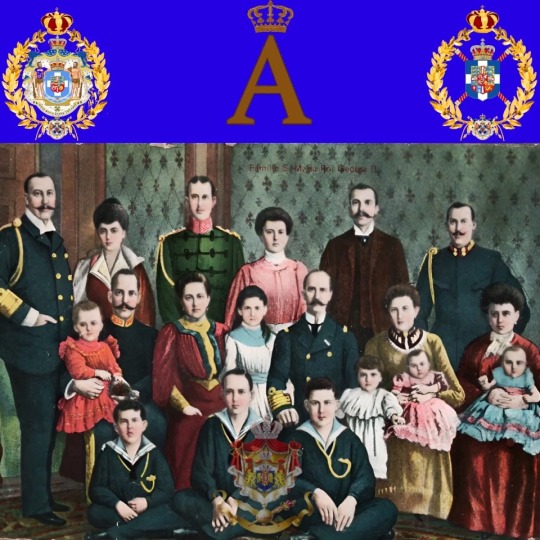

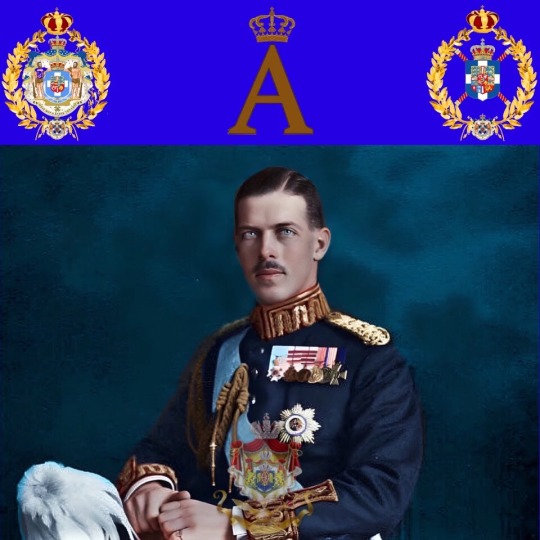



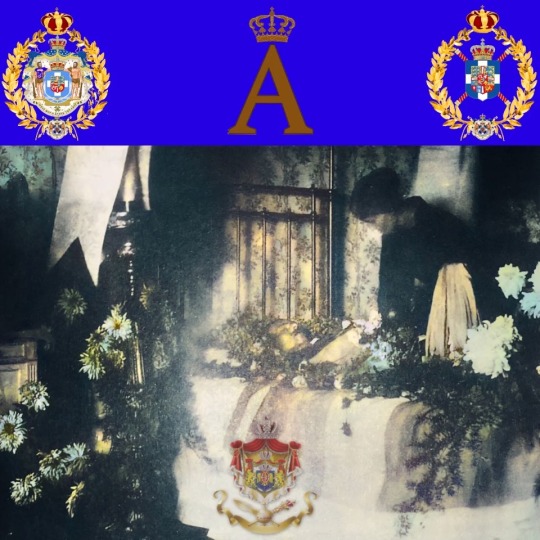

The 25th of October is 103 years since the death of HM King Alexander I of Hellenes (1 August 1893 – 25 October 1920)
Alexander was King of Greece from 11 June 1917 until his death in 1920.
The second son of King Constantine I, Alexander was born in the summer palace of Tatoi on the outskirts of Athens. He succeeded his father in 1917, during World War I, after the Entente Powers and the followers of Eleftherios Venizelos pushed King Constantine and his eldest son, Crown Prince George, into exile. Having no real political experience, the new king was stripped of his powers by the Venizelists and effectively imprisoned in his own palace. Venizelos, as prime minister, was the effective ruler with the support of the Entente. Though reduced to the status of a puppet king, Alexander supported Greek troops during their war against the Ottoman Empire and Bulgaria. Under his reign, the territorial extent of Greece considerably increased, following the victory of the Entente and their Allies in the First World War and the early stages of the Greco-Turkish War of 1919–1922.
Alexander controversially married the commoner Aspasia Manos in 1919, provoking a major scandal that forced the couple to leave Greece for several months.
The government allowed the couple to return to Greece in mid-1920. Although their marriage was legalized, Aspasia was not recognized as queen, but was instead known as "Madame Manos".At first, she stayed at her sister's house in the Greek capital before transferring to Tatoi,and it was during this period that she became pregnant with Alexander's child.
Alexander's daughter by Aspasia Manos, Alexandra , was born five months after his death. Initially, the government took the line that since Alexander had married Aspasia without the permission of his father or the church, his marriage was illegal and his posthumous daughter was illegitimate. However, in July 1922, Parliament passed a law which allowed the King to recognize royal marriages retroactively on a non-dynastic basis.That September King Constantine I —at Sophia's insistence—recognized his son's marriage to Aspasia and granted her the style of "HRH Princess Alexander of Hellenes Princess of Denmark ".Her daughter (Constantine I's granddaughter) was legitimized as HRH princess of Greece and Denmark, and later married King Peter II of Yugoslavia in London in 1944. They had one child: Alexander, Crown Prince of Yugoslavia.
Alexander visited the newly acquired territories of West Thrace, and on 8 July 1920 the new name for the region's main town—Alexandroupoli (meaning "city of Alexander" in Greek)—was announced in the king's presence. The city's previous name of Dedeagatch was considered too Turkish
On 2 October 1920, Alexander was injured while walking through the grounds of the Tatoi estate. A domestic Barbary macaque belonging to the steward of the palace's grapevines attacked or was attacked by the king's German Shepherd dog, Fritz,and Alexander attempted to separate the two animals. As he did so, another monkey attacked Alexander and bit him deeply on the leg and torso. Eventually servants arrived and chased away the monkeys,and the king's wounds were promptly cleaned and dressed but not cauterized. He did not consider the incident serious and asked that it not be publicized.
That evening, his wounds became infected; he developed a strong fever and sepsis set in. His doctors considered amputating his leg, but none wished to take responsibility for so drastic an act. On 19 October, he became delirious and called out for his mother, but the Greek government refused to allow her to re-enter the country from exile in Switzerland, despite her own protestations. Finally, the queen dowager, Olga, George I's widow and Alexander's grandmother, was allowed to return alone to Athens to tend to the king. She was delayed by rough waters, however, and by the time she arrived, Alexander had already died of sepsis twelve hours previously at a little after 4 p.m. on 25 October 1920.The other members of the royal family received the news by telegram that night.
Two days later, Alexander's body was conveyed to Athens Cathedral, where it lay in state until his funeral on 29 October. Once again, the royal family were refused permission to return to Greece, and Queen Olga was the only member who attended.Foreign powers were represented by the Prince Regent of Serbia with his sister Princess Helen wife of John Constantinovich of Russia, the Crown Prince of Sweden with his uncle Prince Eugene, Duke of Nericia, and Rear-Admirals Sir George Hope of the United Kingdom and Dumesnil of France, as well as members of the Athens diplomatic corps.
After the cathedral service, Alexander's body was interred on the grounds of the royal estate at Tatoi.The Greek royal family never regarded Alexander's reign as fully legitimate. In the royal cemetery, while other monarchs are given the inscription "King of the Hellenes, Prince of Denmark", Alexander's reads "Alexander, son of the King of the Hellenes, Prince of Denmark. He ruled in the place of his father from 14 June 1917 to 25 October 1920."According to Alexander's favorite sister, Queen Helen of Romania, this feeling of illegitimacy was also shared by Alexander himself, a sentiment that helps explain his mésalliance with Aspasia Manos
Την 25η Οκτωβρίου συμπληρώνονται 103 χρόνια από τον θάνατο του βασιλιά των Ελλήνων Αλέξανδρου Α΄ (1 Αυγούστου 1893 – 25 Οκτωβρίου 1920)
Ο Αλέξανδρος ήταν βασιλιάς της Ελλάδας από τις 11 Ιουνίου 1917 μέχρι το θάνατό του το 1920.
Ο δεύτερος γιος του βασιλιά Κωνσταντίνου Α΄, ο Αλέξανδρος γεννήθηκε στο θερινό ανάκτορο του Τατοΐου στα περίχωρα της Αθήνας. Διαδέχτηκε τον πατέρα του το 1917, κατά τη διάρκεια του Α' Παγκοσμίου Πολέμου, αφού οι δυνάμεις της Αντάντ και οι οπαδοί του Ελευθέριου Βενιζέλου ώθησαν στην εξορία τον βασιλιά Κωνσταντίνο και τον μεγαλύτερο γιο του, τον διάδοχο Γεώργιο. Μη έχοντας πραγματική πολιτική εμπειρία, ο νέος βασιλιάς αφαιρέθηκε από τις εξουσίες του από τους βενιζελικούς και ουσιαστικά φυλακίστηκε στο παλάτι. Ο Βενιζέλος, ως πρωθυπουργός, ήταν ο αποτελεσματικός ηγεμόνας με την υποστήριξη της Αντάντ. Αν και περιορίστηκε στο καθεστώς ενός βασιλιά-μαριονέτα, ο Αλέξανδρος υποστήριξε τα ελληνικά στρατεύματα κατά τη διάρκεια του πολέμου τους εναντίον της Οθωμανικής Αυτοκρατορίας και της Βουλγαρίας. Επί της βασιλείας του, η εδαφική έκταση της Ελλάδας αυξήθηκε σημαντικά, μετά τη νίκη της Αντάντ και των Συμμάχων της στον Πρώτο Παγκόσμιο Πόλεμο και τα πρώτα στάδια του ελληνοτουρκικού πολέμου του 1919-1922.
Ο Αλέξανδρος παντρεύτηκε αμφιλεγόμενα την απλοϊκή Ασπασία Μάνο το 1919, προκαλώντας ένα μεγάλο σκάνδαλο που ανάγκασε το ζευγάρι να εγκαταλείψει την Ελλάδα για αρκετούς μήνες.
Η κυβέρνηση επέτρεψε στο ζευγάρι να επιστρέψει στην Ελλάδα στα μέσα του 1920. Αν και ο γάμος τους νομιμοποιήθηκε, η Ασπασία δεν αναγνωρίστηκε ως βασίλισσα, αλλά ήταν γνωστή ως «Μαντάμ Μάνος». Στην αρχή, έμεινε στο σπίτι της αδερφής της στην ελληνική πρωτεύουσα πριν μετακομίσει στο Τατόι, και την περίοδο αυτή έγινε έγκυος στο παιδί του Αλέξανδρου.
Η κόρη του Αλέξανδρου από την Ασπασία Μάνου, η Αλεξάνδρα, γεννήθηκε πέντε μήνες μετά τον θάνατό του. Αρχικά, η κυβέρνηση υιοθέτησε τη γραμμή ότι αφού ο Αλέξανδρος είχε παντρευτεί την Ασπασία χωρίς την άδεια του πατέρα του ή της εκκλησίας, ο γάμος του ήταν παράνομος και η κόρη του νόθα. Ωστόσο, τον Ιούλιο του 1922, το Κοινοβούλιο ψήφισε νόμο που επέτρεπε στον Βασιλιά να αναγνωρίζει αναδρομικά τους βασιλικούς γάμους σε μη δυναστική βάση. Εκείνο τον Σεπτέμβριο,ο Κωνσταντίνος —με την επιμονή της Σοφίας— αναγνώρισε το γάμο του γιου του με την Ασπασία και της παραχώρησε το στυλ "ΑΒΥ Πριγκίπισσα Αλέξανδρου των Ελλήνων Πριγκίπισσα της Δανίας". Η κόρη της (η εγγονή του Κωνσταντίνου Α') νομιμοποιήθηκε ως ΑΒΥ πριγκίπισσα της Ελλάδας και της Δανίας και αργότερα παντρεύτηκε τον βασιλιά Πέτρο Β' της Γιουγκοσλαβίας στο Λονδίνο το 1944. Απέκτησαν ένα παιδί: τον Αλέξανδρο, διάδοχο της Γιουγκοσλαβίας.
Ο Αλέξανδρος επισκέφθηκε τα πρόσφατα αποκτηθέντα εδάφη της Δυτικής Θράκης και στις 8 Ιουλίου 1920 το νέο όνομα για την κύρια πόλη της περιοχής —Αλεξανδρούπολη (που σημαίνει «πόλη του Αλεξάνδρου» στα ελληνικά)— ανακοινώθηκε παρουσία του βασιλιά. Το προηγούμενο όνομα της πόλης Dedeagatch θεωρήθηκε πολύ τουρκικό
Στις 2 Οκτωβρίου 1920, ο Αλέξανδρος τραυματίστηκε ενώ περπατούσε στους χώρους του κτήματος Τατοΐου. Ένας οικόσιτος μακάκος Barbary που ανήκε στον οικονόμο των αμπελιών του παλατιού επιτέθηκε ή δέχθηκε επίθεση από τον Γερμανικό Ποιμενικό σκύλο του βασιλιά, Φριτς, και ο Αλέξανδρος προσπάθησε να χωρίσει τα δύο ζώα. Καθώς το έκανε, μια άλλη μαϊμού επιτέθηκε στον Αλέξανδρο και τον δάγκωσε βαθιά στο πόδι και τον κορμό. Τελικά έφτασαν υπηρέτες και έδιωξαν τους πιθήκους, και οι πληγές του βασιλιά καθαρίστηκαν και ντύθηκαν αμέσως, αλλά δεν καυτηριάστηκαν. Δεν θεώρησε το περιστατικό σοβαρό και ζήτησε να μην δημοσιοποιηθεί.
Εκείνο το βράδυ, οι πληγές του μολύνθηκαν. ανέπτυξε δυνατό πυρετό και εμφανίστηκε σήψη. Οι γιατροί του σκέφτηκαν να ακρωτηριάσουν το πόδι του, αλλά κανένας δεν ήθελε να αναλάβει την ευθύνη για μια τόσο δραστική πράξη. Στις 19 Οκτωβρίου, παραληρούσε και φώναξε τη μητέρα του, αλλά η ελληνική κυβέρνηση αρνήθηκε να της επιτρέψει να ξαναμπεί στη χώρα από την εξορία στην Ελβετία, παρά τις δικές της διαμαρτυρίες. Τελικά, η κηδεμόνα της βασίλισσας, Όλγας, χήρα του Γεωργίου Α' και γιαγιά του Αλέξανδρου, επετράπη να επιστρέψει μόνη στην Αθήνα για να φροντίσει τον βασιλιά. Ωστόσο, καθυστέρησε από τα ταραγμένα νερά, και όταν έφτασε, ο Αλέξανδρος είχε ήδη πεθάνει από σήψη δώδεκα ώρες πριν, λίγο μετά τις 4 μ.μ. στις 25 Οκτωβρίου 1920. Τα άλλα μέλη της βασιλικής οικογένειας έλαβαν τα νέα με τηλεγράφημα εκείνο το βράδυ.
Δύο ημέρες αργότερα, η σορός του Αλέξανδρου μεταφέρθηκε στον Καθεδρικό Ναό Αθηνών, όπου παρέμεινε στην κατάσταση μέχρι την κηδεία του στις 29 Οκτωβρίου. Για άλλη μια φορά, η βασιλική οικογένεια αρνήθηκε να επιστρέψει στην Ελλάδα και η βασίλισσα Όλγα ήταν το μόνο μέλος που παρευρέθηκε. Οι ξένες δυνάμεις εκπροσωπήθηκαν από τον Πρίγκιπα Αντιβασιλέα της Σερβίας με την αδελφή του Πριγκίπισσα Ελένη, σύζυγο του Ιωάννη Κωνσταντίνοβιτς της Ρωσίας, τον διάδοχο της Ρωσίας Σουηδία με τον θείο του Πρίγκιπα Ευγένιο, Δούκα της Νερίσιας, και τους Αντιναύαρχους Sir George Hope του Ηνωμένου Βασιλείου και Dumesnil της Γαλλίας, καθώς και μέλη του διπλωματικού σώματος της Αθήνας.
Μετά τη λειτουργία του καθεδρικού ναού, η σορός του Αλεξάνδρου ενταφιάστηκε στο βασιλικό κτήμα στο Τατόι. Η ελληνική βασιλική οικογένεια ποτέ δεν θεώρησε τη βασιλεία του Αλεξάνδρου ως απολύτως νόμιμη. Στο βασιλικό νεκροταφείο, ενώ σε άλλους μονάρχες δίνεται η επιγραφή «Βασιλιάς των Ελλήνων, Πρίγκιπας της Δανίας», του Αλεξάνδρου γράφει «Αλέξανδρος, γιος του Βασιλιά των Ελλήνων, Πρίγκιπας της Δανίας. Κυβέρνησε στη θέση του πατέρα του από το 14 Ιουνίου 1917 έως 25 Οκτωβρίου 1920.
#kingconstantine#danishroyalfamily#crownprincepavlos#queenannemarie#greek royal family#house of romanov#greekroyals#crownprincessmariechantal#danishroyals#princeconstantinealexios
2 notes
·
View notes
Text


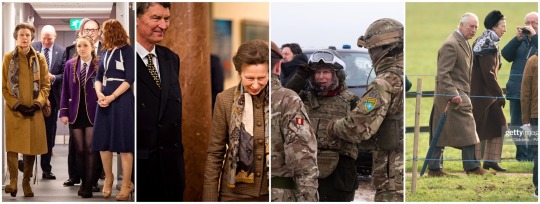
The Princess Royal’s Official Engagements in January 2023
05/01 Oxford Farming Conference
10/01 Traveled to Cyprus and attended a Reception and Dinner 🇨🇾
11/01 Meeting with the President of Cyprus, Nicos Anastasiades at the Presidential Palace, Nicosia.
Visited personnel from the Royal Logistic Corps who are currently serving with the United Nations Peacekeeping Force in Cyprus (UNFICYP), on Operation TOSCA.
During the visit, The Princess was able to view different areas of the Buffer Zone and Nicosia, including the Ledra Palace Hotel, the abandoned Nicosia International Airport and Wayne's Keep Military Cemetery where there was a Service of Remembrance and Wreath Laying Ceremony UN Buffer Zone, Nicosia.
Opened Queen Berengaria Military School at Dhekelia Garrison, which serves British military communities from Dhekelia and Nikolaos.
12/01 As President of the Royal Yachting Association, HRH attended their Annual Luncheon at Trinity House, London
As Royal Patron of the Motor Neurone Disease Association, HRH attended a Reception and the ""Insights: Women in Sport"" Panel Discussion at the British Olympic Association
14/01 Opened the Gloucester Health and Care NHS Trust's Therapeutic Allotment in Gloucester
16/01 unofficial Accompanied by Sir Tim Laurence and Lady Gabriella Windsor, she attended King Constantine II’s funeral in Tatoi, Greece 🇬🇷
17/01 As President, of the UK Fashion and Textile Association, HRH opened Kalopsia Collective's new textiles facility
Visited the FastBlade Structural Testing Facility, at the University of Edinburgh
As Patron of the Royal Caledonian Hunt, HRH attended a Dinner to mark the Two Hundredth Anniversary of Royal Patronage
18/01 Investitures held at the Palace of Holyroodhouse 🏴
Planted a tree in Jubilee Wood, Holyrood Park, Edinburgh, to commemorate The late Queen's Platinum Jubilee
Her Royal Highness, Member, the Royal British Legion Scotland, afterwards Re-opened Lady Haig Poppy Factory, Edinburgh
Attended a Reception for Nurses and Midwives at Old College, University of Edinburgh.
Visited WildGenes Laboratory at Edinburgh Zoo, to mark the Laboratory's Tenth Anniversary
20/01 Visited 9 Regiment at Buckley Barracks, Lower Stanton St. Quintin, Wiltshire.
24/01 HRH, accompanied by Sir Tim Laurence, traveled to Estonia and attended a Dinner held by Alar Karis, President of Estonia at Kadriorg Palace, Tallinn. 🇪🇪
25/01 As Colonel-in-Chief of The King's Royal Hussars, accompanied by Vice Admiral Sir Tim Laurence, HRH visited the NATO Enhanced Forward Presence at Tapa Military Base, Estonia, and later attended a Reception given by His Majesty's Ambassador to the Republic of Estonia at the Residence in Tallinn.
29/01 unofficial Attended a church service with King Charles III at Sandringham
Total official engagements for Anne in January (not all listed in this post): 32
Total official engagements accompanied by Tim in January: 3
#I’m going to do these every month as a kind of round up thing ☺️#hardest working royal 🫡#no choice but to stanne#I haven’t included departing or arriving in a country in the count#this is based of the court circular#and yes I’m doing a separate count for tim too#because I’m rooting for…#operation working royal tim#charles i hope ur listenanne#not all engagements are on this post#if you want a full list plz dm me 💕#princess anne#princess royal#tim laurence#timothy laurence#monthly engagement post
17 notes
·
View notes
Note
Remember King charles held a meeting in windsor or bp i cant to fund the restoration of Tatoi palace like dumfries house, im sure the greek royal family dont take offence to him or william missing the funeral. Just because they arent visibly there doesnt mean they arent close behind the scenes
I honestly don't know what either of them are busy with, which is fine.
12 notes
·
View notes
Text
2 notes
·
View notes
Text
The mystery of the Greek regalia has been solved...?
A mystery counting centuries was solved recently, when the Greek regalia, missing for many decades, were apparently discovered carefully stored in Tatoi Palace during its maintenance works.

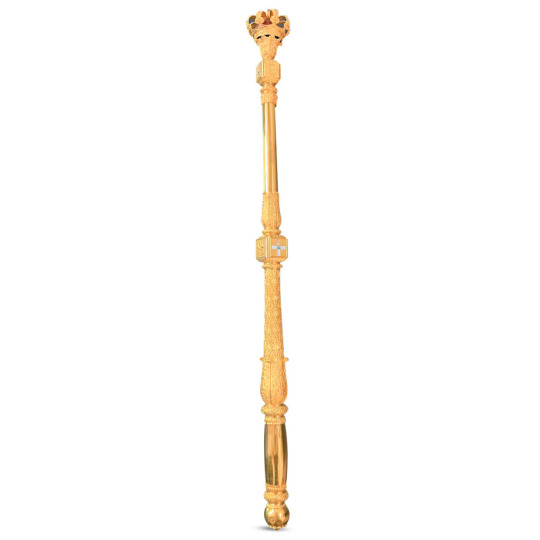
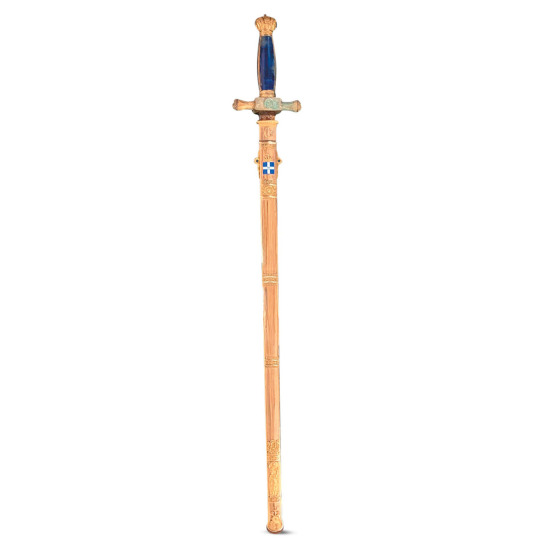
The regalia of the Greek Kingdom were commissioned in Paris 1834, before the coronation of Otto of Greece. However, the regalia's transfer was delayed and Otto was coronated before they arrived at the country. As a result, Otto never actually used them but he did take them with him to Bavaria when he was exiled 30 years later.
The regalia reappeared almost a century after their creation when Albrecht von Wittelsbach, Prince of Bavaria, returned them to the Greek Kingdom during the wedding of King Paul of Greece to Frederica of Hanover, even though Paul belonged to a different house (Glücksburg).
The crown reportedly shortly appeared in the funerals of Paul and Frederica, however after that there was no more information on the whereabouts of the regalia. This led to conspiracy theories or even a conviction shared by historians and the public alike, which accused Constantine II, their son and last King of Greece, of sneaking the regalia out of the country and keeping them to himself, even though those belong to the Greek state and not a particular royal house.
Finally, the regalia were recently found carefully stored in Tatoi palace, outside Athens. This led to some re-evaluation of the theories blaming Constantine although some, including a significant historian, speculate that Constantine's descendants, sneaked the regalia back to the palace after the ex-King's death, to end these rumours casting a shadow over the ex-royal family.
The Greek regalia were commisioned to the French royal goldsmith house, Fossin et Fils, which had crafted the regalia of Napoleo Bonaparte. The sword was commissioned to the famed swordsmith Jules Manciaux. The regalia were made of gold, gilded metal and silver.
Otto tried to diverge a little from Bavarian archetypes for the designation of the regalia and establish a style slightly differing from the western kingdoms. The use of gems is very modest; only the sword is decorated with lapis lazuli. The decorative patterns refer directly to Greece, Christianity and the ancient greek culture. Lapis lazuli was chosen for its blue colour, the trademark colour associated with Greece. The sword case bears the Greek royal flag. The base has a sculpted presentation of a trident and two dolphins, as well as Goddess Nike (Victory).
The crown was very modest compared to most crowns in the west. Its base was crafted to look like a wreath of laurels. It has additional details of acanthus leaves and lion heads. The globus cruciger lies on the top of the crown and the cross resembles that of the Orthodox Church, unlike the ones in western kingdoms. In his own words, Otto had written to the architect Friedrich von Gürtner that his vision was for the architecture and designs used for him to be relatively strict, with noble dignity and simplicity.
The regalia will now be kept in the trophy hall of the Greek parliament.
Sources:
Newsbomb
Θέμα
11 notes
·
View notes
Photo

16 March 2015 | Pavlos, Crown Prince of Greece attends a dirge and the Orthodox Mass in memory of King Paul in the cemetery at Tatoi Palace on the anniversary of her father King Paul I's death in Athens, Greece, (c) Milos Bicanski/ Getty Images
2 notes
·
View notes
Text

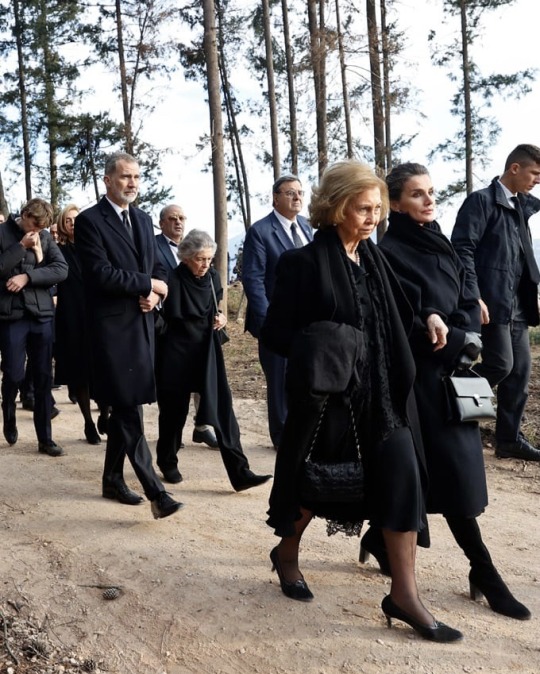
Queen Sofia, King Felipe and Queen Letizia attend the burial of King Constantine II at Tatoi Palace in Greece | January 16th, 2023
27 notes
·
View notes
Video
youtube
Footage of inside and outside Tatoi Palace before the revolution, and the Greek Royal Family, taken at the time of Sofia and Juan Carlos’ engagement. (Narration in German.)
5 notes
·
View notes
Text
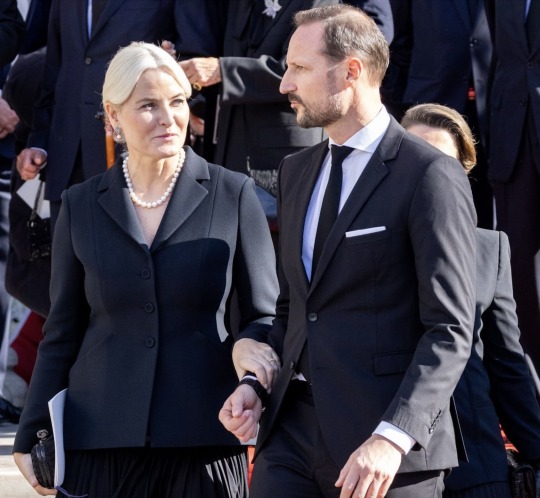
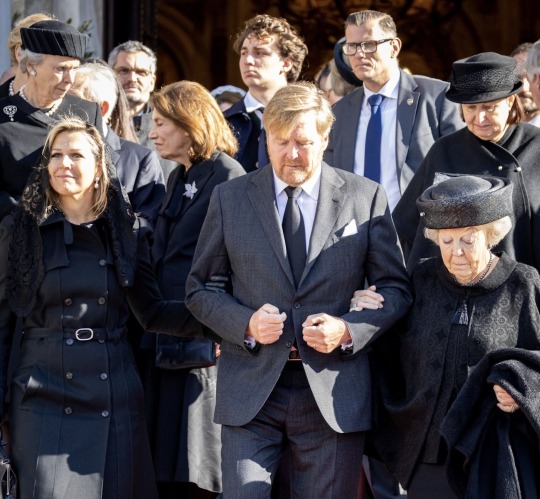





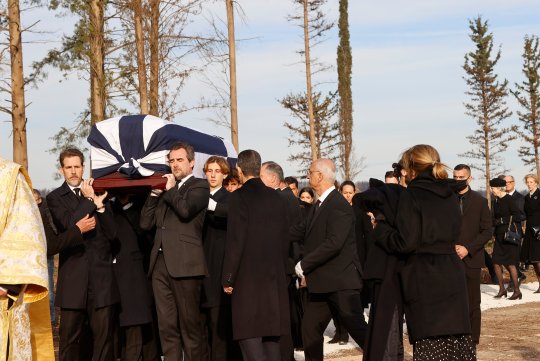


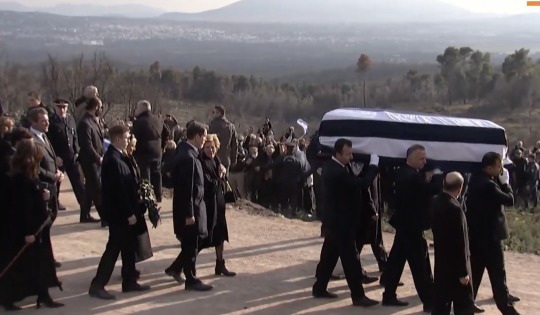

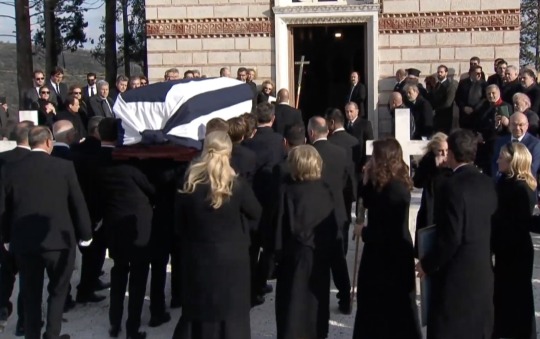
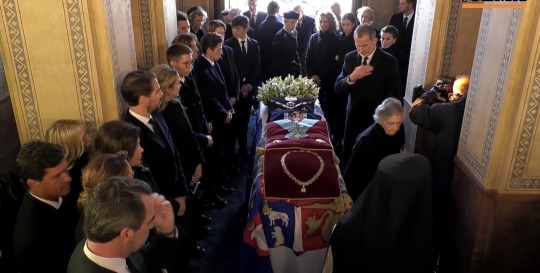
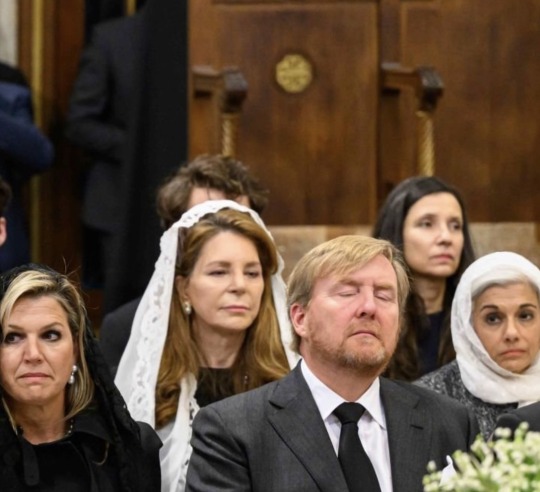


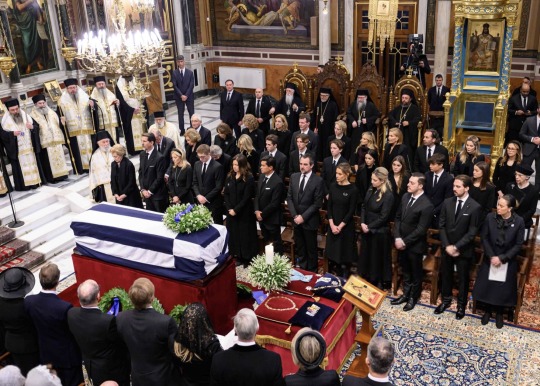
The Funeral of King Constantine II of Greece at the Metropolitan Cathedral in Athens ahead of the Burial in the Royal Cemetery at Tatoi Palace: https://royalwatcherblog.com/2023/01/16/open-post-the-funeral-of-king-constantine-ii-of-greece-2/
0 notes